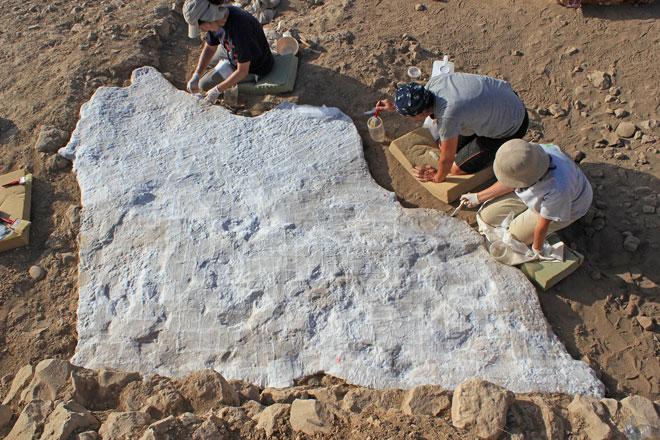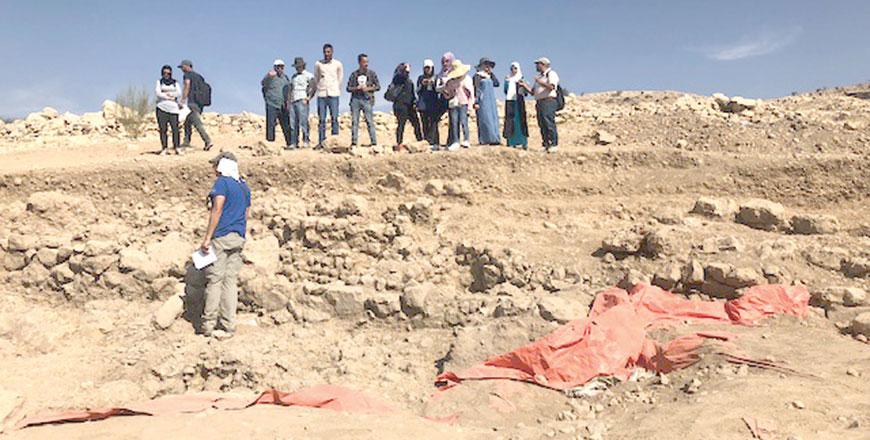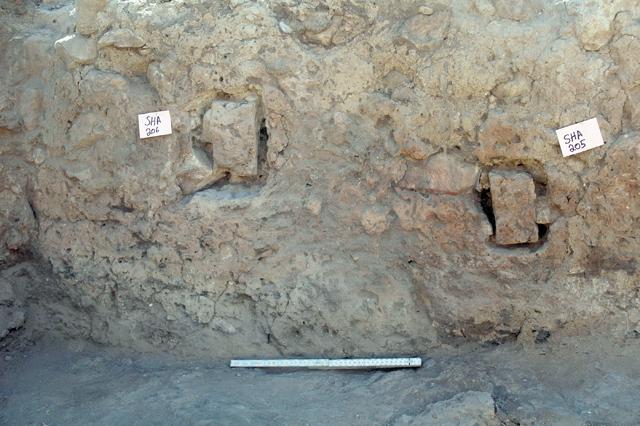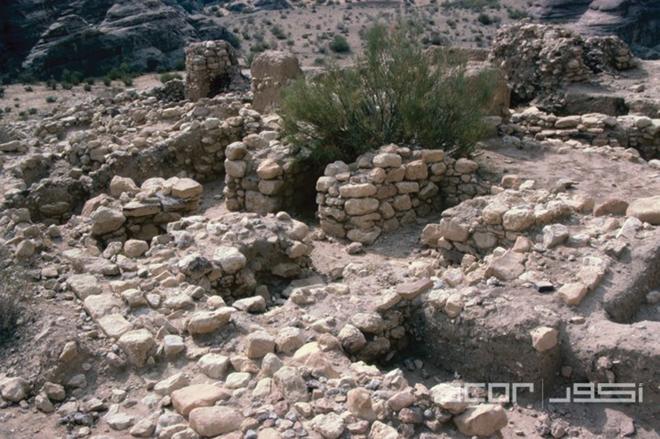You are here
Spanish mission returns to Neolithic site of Kharaysin
By Ana V. Ibáñez Prieto - Sep 25,2017 - Last updated at Sep 25,2017

Members of the Spanish Archaeological Mission work on lime soils at the Neolithic site of Kharaysin, Zarqa (Photo courtesy of Juan José Ibáñez)
AMMAN — The Spanish Archaeological Mission returned to Jordan last week to continue its excavations at the Neolithic site of Kharaysin (Quneya, Zarqa), considered by the experts as “one of the first locations in the world where communities started building households and grouping as agricultural societies”.
Juan José Ibáñez, Neolithic specialist and investigator at the Institución Milá i Fontanals — CSIC, recently presented the campaign’s latest findings and objectives in a conference held at the Instituto Cervantes in Amman.
During the conference, Ibáñez noted that Kharaysin was one of the first historical sites to present signs of sedentarism, agriculture and cattle raising — initiating the transition from the hunting and gathering culture to the agricultural society.
“Jordan is one of the first places in the world where we start to witness this transition, key to the history of humanity,” the scholar said, noting the “universal value” of the Kharaysin settlement.
Commenting on the findings of last year’s campaign, Ibáñez highlighted the discovery of lime soils in the Neolithic houses, which presents evidence of the start of hygienic practices in the household.
“We found 10,800-year-old lime soils, which show us how communities started implementing cleaning measures in order to settle as a society,” Ibáñez noted.
The investigators are working this year in the restoration of the soils, which are to be exposed at the Archaeological Museum of Amman Citadel in the spring of 2018.
Ibáñez also spoke about the discovery of a new occupation level at the site, where households of a size up to 40 square metres present multiple rooms and stone walls.
“The houses in this new level are square-shaped instead of oval and they are agglomerated, sharing walls with each other,” the expert explained.
Moreover, the investigator pointed out a change in the burial techniques used at the site, noting that communities started burying the deceased inside the house instead of outside.
“This change indicates a stronger vinculation of the ancestors with the household, tying a knot between past and future generations,” Ibáñez explained.
Furthermore, the investigators said they found evidence of incinerations and rituals where the cranium was separated from the rest of the body remains.
The Spanish Archaeological Mission is now working to find out what led the Neolithic communities to settle in a pendant instead of a plain area.
“We have found proof of how individuals would cut the land and build walls in order to create horizontal surfaces and settle there, but we are still uncertain about their motives,” Ibáñez said.
In the next phase, the team aims to study earlier periods of the Neolithic site, investigating the origins of the settlements and the conditions that led communities to transition from the nomad to the sedentary lifestyle.
Related Articles
AMMAN — A Spanish archaeological team has recently restored a 10,800-year-old painted lime floor unveiled at the Neolithic site of Kharaysin
IRBID — Communal buildings in Sharara, a site located in Wadi Al Hasa which overlooks the southern part of the Dead Sea, during Pre-Pottery
AMMAN — The Neolithic period is rich in archaeological remains that show most of the fundamental developments in human history, noted a Jord



















